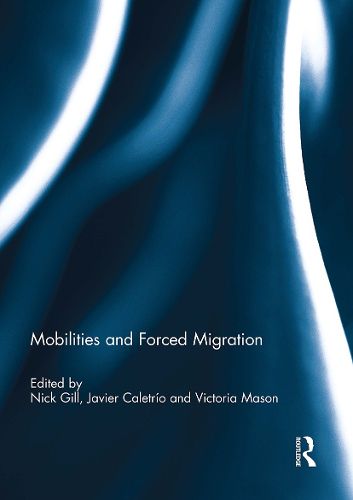Readings Newsletter
Become a Readings Member to make your shopping experience even easier.
Sign in or sign up for free!
You’re not far away from qualifying for FREE standard shipping within Australia
You’ve qualified for FREE standard shipping within Australia
The cart is loading…






Whether precipitated by political or environmental factors, human displacement can be more fully understood by attending to the ways in which a set of bodily, material, imagined and virtual mobilities and immobilities interact to produce population movement. Very little work, however, has addressed the fertile middle ground between mobilities and forced migration. This book sets out the ways in which theories of mobilities can enrich forced migration studies as well as some of the insights into mobilities that forced migration research offers.
The book covers the challenges faced by both forced migrants and receiving authorities. It applies these challenges to regions such as the Middle East, South Asia and East Africa. In particular, the chapter on Iraq to Jordan foced migration tests the sincerity of the concept of Pan-Arabism; the chapters on Bangladesh and Ethiopia deal with the more historically familiar variables of warfare and famine as drivers of forced migration.
This book will be of value to practitioners in the area of human rights and to scholars of racial and ethnic politics, human geography and globalization.
This book was published as a special issue of Mobilities.
$9.00 standard shipping within Australia
FREE standard shipping within Australia for orders over $100.00
Express & International shipping calculated at checkout
Whether precipitated by political or environmental factors, human displacement can be more fully understood by attending to the ways in which a set of bodily, material, imagined and virtual mobilities and immobilities interact to produce population movement. Very little work, however, has addressed the fertile middle ground between mobilities and forced migration. This book sets out the ways in which theories of mobilities can enrich forced migration studies as well as some of the insights into mobilities that forced migration research offers.
The book covers the challenges faced by both forced migrants and receiving authorities. It applies these challenges to regions such as the Middle East, South Asia and East Africa. In particular, the chapter on Iraq to Jordan foced migration tests the sincerity of the concept of Pan-Arabism; the chapters on Bangladesh and Ethiopia deal with the more historically familiar variables of warfare and famine as drivers of forced migration.
This book will be of value to practitioners in the area of human rights and to scholars of racial and ethnic politics, human geography and globalization.
This book was published as a special issue of Mobilities.